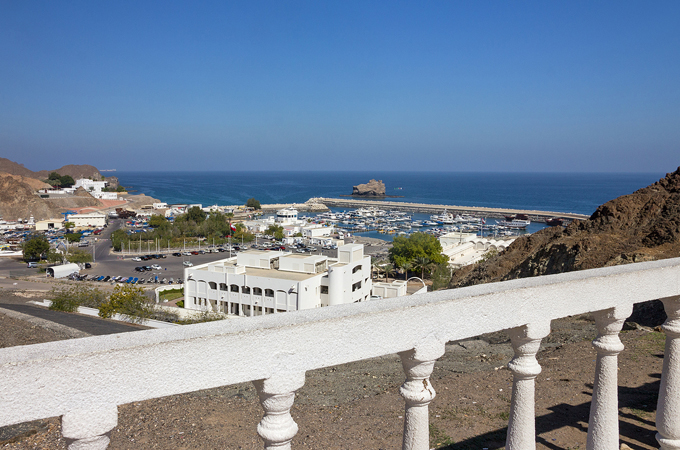
Oman central government balance has improved
Oman’s GDP growth projected at 4.3pc in 2022: IMF
WASHINGTON, November 16, 2022
Overall GDP growth in Oman rebounded from -3.2% in 2020 to 3% in 2021 and is projected at 4.3% in 2022, supported by increased hydrocarbon production and continued recovery of non-hydrocarbon economic activity.
This is according to the Executive Board of the International Monetary Fund (IMF), which concluded the Article IV consultation with Oman and considered and endorsed the staff appraisal without a meeting.
High oil prices and fiscal consolidation under the authorities’ Medium-Term Fiscal Plan (MTFP), have improved fiscal and external balances considerably. The overall central government balance improved by 12.8 percentage points of GDP to a deficit of 3.2% in 2021, largely due to higher hydrocarbon revenue, expenditure restraint, and the introduction of VAT.
Fiscal and external surpluses
Fiscal and external surpluses are expected in 2022 and over the medium term. Central government debt declined to 62.9% of GDP in 2021 and it is expected to decline to about 44% of GDP in 2022.
The banking system has weathered the recent shocks relatively well. Financial soundness indicators appear healthy, benefiting from prudent oversight of the Central Bank of Oman and the strong buffers before entering the crisis. However, private sector credit growth has remained subdued, according to the IMF team.
The authorities remain committed to fiscal consolidation notwithstanding oil revenue windfalls and social pressures. Significant fiscal adjustment is being implemented in 2022, which has allowed for increased social spending while still generating a substantial surplus due to the oil windfall. However, reinforcing fiscal sustainability over the medium term, as envisaged under the MTFP, and creating space for social safety net reforms and higher capital expenditure require additional measures. Thus, efforts to strengthen tax administration and implement a PIT are welcome. The phased withdrawal of untargeted energy and water subsidies should be a priority. Intensive public outreach is essential to sustain support for fiscal consolidation amid rising oil windfalls.
Strong fiscal frameworks
Establishing strong fiscal frameworks with clear objectives and a long-term anchor would help achieve fiscal sustainability. Fiscal frameworks would lay the foundation for adopting a fiscal rule. A rule based on the non-hydrocarbon structural primary balance, which is robust to hydrocarbon price volatility and economic fluctuations, could be appropriate. Ongoing reforms to improve public financial management and transparency are welcome and developing a sovereign asset and liability management framework should be a priority.
The exchange rate peg remains appropriate. The peg has provided a credible monetary anchor, helping to deliver low and stable inflation. Official foreign reserves, fiscal prudence, and structural reforms would continue to reinforce the peg. Better coordination between fiscal and monetary authorities, improved liquidity management, and deeper financial markets would improve the capacity for a more independent monetary policy.
Financial system risks are low, but the CBO should continue its close monitoring of bank asset quality and its efforts to strengthen regulatory frameworks. Restoring prudential rules to pre-pandemic levels should be a priority. Enacting the new Banking Law would align the legislation with international best practices. Careful coordination is needed to ensure that banking system liquidity remains adequate as plans to enhance the liquidity management framework and establish the TSA are implemented. Progress in developing capital markets is welcome.
Economic recovery
The economic recovery is gaining traction. Rebounding economic activity and elevated global inflationary pressures are expected to push up average inflation to 3% in 2022. Direct spillovers on the Omani economy from the war in Ukraine have been limited.
Uncertainties continue to cloud the outlook, with downside risks dominating in the short run. On the upside, the outlook could be bolstered by higher-than-expected hydrocarbon windfalls, accelerated implementation of structural reforms under Vision 2040, and the realisation of investment projects from regional partners. On the downside, risks stem particularly from uncertainty about the war in Ukraine and its impact on the global economy and oil prices, a renewed flare-up of Covid-19 infections, tighter-than-expected global financial conditions, increased inflationary pressures from higher global food and energy prices, more persistent disruption in global supply chains, pressures to spend the hydrocarbon windfalls, and climate-related events.
Steadfast implementation of structural reforms under Vision 2040 is paramount to secure more inclusive, diversified, and sustainable growth. Strengthening the social safety net would help facilitate reforms to improve labor market flexibility. Advancing SOE reforms should also be prioritised to promote competition, strengthen governance, and stimulate private sector participation in the economy. To facilitate the digital economy transformation, worker skills will need to be upgraded. Pressing ahead with addressing climate challenges should be a priority.-- TradeArabia News Service








